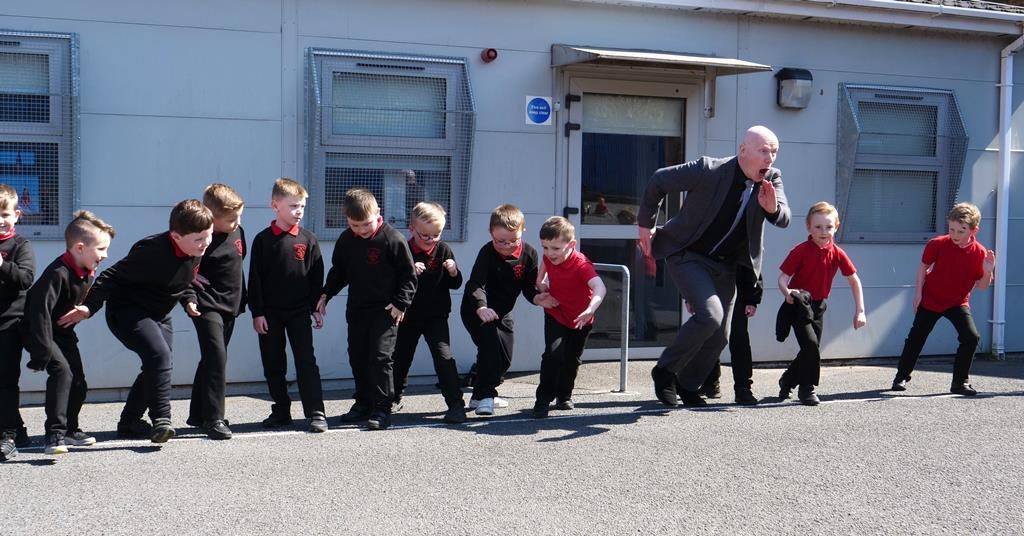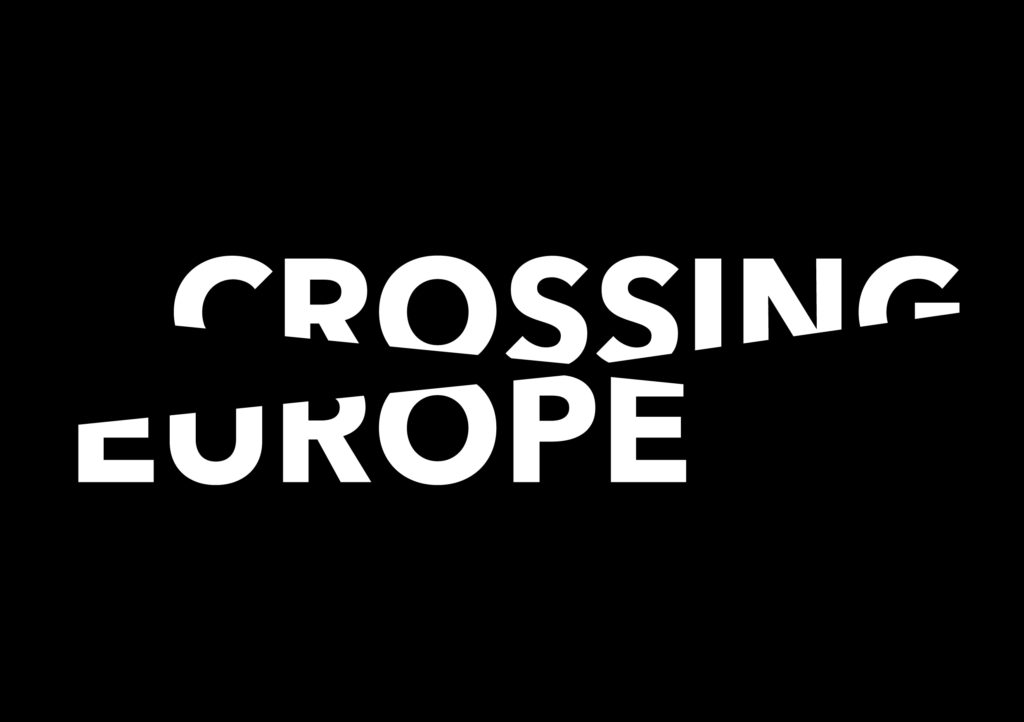Review: Young Plato (2021)

Dare to think for yourself, the tagline on the poster states with a stately air. Because, as the documentary Young Plato by Neasa Ní Chianáin and Declan McGrath shows, if you don’t you are meant to repeat the cycle of violence forever. Shot over the course of a year and a half, their “fly on the wall” style documentary follows the daily life at an all-boys catholic primary school in Ardoyne, a district in the north of Belfast. How can these kids overcome the intergenerational trauma and conflict, and what role do Seneca and Aristotle play in it?
Ní Chianáin, who hails from the Republic, already portrayed a year in the life at Headfort School in her documentary Loco Parentis (2016). McGrath, also a documentary filmmaker, is from the North himself and was introduced to the school and its philosophical approach to conflict resolution via one of its graduates, as he recounts on “Film Ireland Podcast”. For him, shooting this film felt like doing something about the situation, “making a contribution”.
Already the opening shot of the film presents the complexity of the geographical area. A drone peacefully hovers over a calm, picturesque neighbourhood on the outskirts of a city. Long lines of terraced houses, little yellow busses pushing along the streets and a full sky of sunshine give this location an almost idyllic appearance. But make no mistake, this area has seen violence. Ardoyne, with its mostly Catholic population, is an area that over the decades has been hit particularly hard by the Troubles. Furthermore, to this day, it suffers from suicide, especially amongst its males, and drugs and alcohol.
Kevin McArevey, the headmaster of Holy Cross Boys Primary School, is one of those people fighting for a better future for the younger generation and inheritors of the peace process. He is introduced as a sympathetic, bald, smiling man, who is cheerfully singing along to his idol Elvis in his car, decorating his office with collectables, while also challenging himself constantly with a Rubik’s Cube and the teachings of philosophical books such as “The Daily Stoic”.

Whenever he passes the small neighbourhood in his car, Ní Chianáin and McGrath don’t beat around the bush. Threatening murals of IRA and UVF fighters loom down from walls on every corner, the Union Jack and the Irish flag are demarcating clear community borders. Scenes of young boys walking to school alone or with their parents are intercut with old footage of the 2001 conflict of the Holy Cross Girls School. To reach the catholic school situated in a Loyalist neighbourhood, the police had to protect the girls from an angry mob for over a year, traumatizing them most likely for life.
The situation may now be different, but there is a frail stability hanging in the air. The barbed wire and the peace walls reaching up to the school are a constant reminder of an uneasy truce. This awareness is, however, overshadowed by an inherited normality of the situation. How many of the boys were not aware that these walls still exist, McAverey asks the pupils at some point during a history class. Several hands shoot into the air in response.
Break the cycle. Think for yourself. By introducing philosophical debate, McArevey and his staff are hoping to stop this vicious continuation of sectarian conflict. Ní Chianáin and McGrath showcase several instances of school life, in which Seneca, Aristoteles or Heraclitus get their moment to shine. Controlling one’s emotions, removing oneself from conflict and questioning established answers are part of the toolbox offered to the boys. The camera follows them during recess on the playground, where their bullying or swinging fists is met by the staff with philosophical reflection time and debate. Or during in-class brainstorming, where the pupils draw parallels of these ancient teachings to their modern life.
“Should you ever take your anger out on someone else”, “how many boys think it’s ok to cry”, or “what are the consequences of fighting” are the questions that McArevey throws into the room or writes on his philosophy wall, a whiteboard hanging in the hallway. The answers his students give him range from downright thoughtful, over reproductive of their environment to outright abstract entertainment. “Stop fighting and peace” takes turns with “I decided to roll my eyes down. I saw my throat. That’s creeping me out.” The idea behind these exercises is simple. Instil the basic humanist idea of equality before life and age will add their shades of grey and political context.
The film walks the thin line of portraying the boys as just that – innocent, still naïve and idealistic spirits – while also giving their experiences and opinions gravitas. “Everyone in this class has an aunty or uncle related to them that is a Protestant,” one boy observes. In the heat of the moment, however, like the flick of a switch, old patterns re-emerge. “My daddy says if anybody starts at you, or they hit you, always hit them back”, young Dylan explains after a recess fight with his cousin.
While Ní Chianáin and McGrath try to portray the school community as a whole, they do put special focus on a handful of boys, who enrich the narrative with their diverse, often quirky personalities. There is Alfie, who has problems relating to others and suffers from his diabetes diagnosis. Conor, who is soon heading into secondary school and is still testing his grounds. Ethan, whose out of blue life observations show how he tends to think outside the box. And there are cousins Conor and Dylan, who keep fighting on the playground, accusing each other of acting hard while being sensitive individuals deep down.
Their success in rising above themselves is juxtaposed with an off-screen funeral of a boy named Declan, a former student who committed suicide. A further mention goes to his friend, who was banned from the school grounds for selling drugs. The pendulum can quickly swing in one or the other direction, as Ní Chianáin recalls on the podcast. “The staff and Kevin cannot control the environment, but they can help make them as resilient as they possibly can. The choices that they make in their teen years will influence the course of their lives, whether that will be a good thing or a bad thing.”
This interplay of positive educational outlook and distraught callbacks to the past is masterfully underscored by David Poltrock’s soundtrack. Always hitting the right emotional cues, his orchestral arrangement enhances the joyful moments as well as the emotional turmoil. But the last words belong to the King itself. As McArevey drives past the new school mural, a painting of Conor in the “The Thinker” pose, with “To find yourself think for yourself” enthroned in large letters above, Elvis roars from the car speakers. “If I can dream,” the familiar dark timbre of his voice fills the screen. “If I can dream of a better land, where all my brothers walk hand in hand”. With the ability to think beyond the old, destructive narratives, who knows if this dream might come true after all.
Directors: Neasa Ní Chianáin, Declan McGrath
Story Consultant: Etienne Essery
Cinematography: Neasa Ní Chianáin
Editing: Philippe Ravoet
Music: David Poltrock
Sound: Frédéric Hamelin, Reto Stamm
Post Production Supervisor: Mark Carroll
Producer: David Rane
Co-producers: Hanne Phlypo (Clin d’oeil films), Declan McGrath (Aisling Productions), Celine Nusse (Zadig Productions)
















